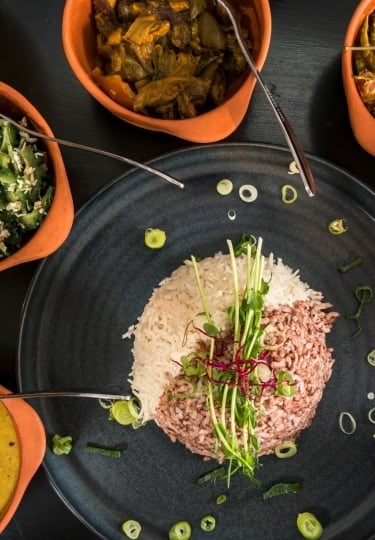In Sri Lanka, food is all about bold, powerful flavors. Expect mouth-searing curries, pucker-inducing pickles, and sweets enriched with the deeply caramelized flavor of jaggery.
Sometimes known as the Pearl of the Indian Ocean, Sri Lanka is blessed with an abundance of fresh seafood, luscious coconuts, and some of the most prized spices in the world. All of these feature prominently in its food.
Above all, Sri Lankan cuisine reflects not only the diversity of the nation’s ingredients, but also the diversity of its people. The nation’s complicated history of colonialism and conflict has had a profound impact on the food.
Many dishes feature strong South Indian influences, although Dutch, Portuguese, Chinese, British, and other cultural influences have been incorporated. As a result, you’ll find Dutch-style sweets alongside South Indian-style lentil fritters.
Here are just a few specialties to try on your next visit to Sri Lanka.
Rice & Curry
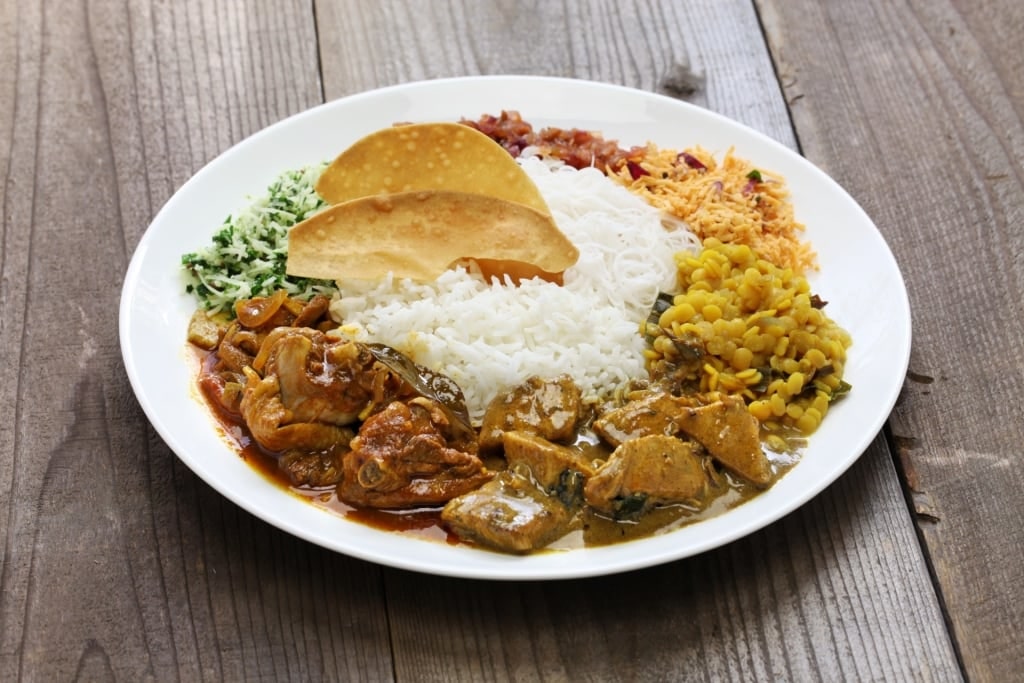
Rice and curry
Sri Lanka’s national meal is more of a template than a specific recipe. A rice and curry dinner really consists of an assortment of curries, usually served in small bowls. Chicken, goat, fish, or lamb curries are common, alongside vegetarian ones made with braised jackfruit.
A spiced, creamy lentil dhal is nearly always present, as are a series of fresh chutneys. Note that Sri Lankans don’t shy away from capsicum heat, so many of these pack a real punch.
At the center of this ring of fire lies a palate-soothing mound of rice. Some restaurants will use plain steamed or boiled white rice, while others will opt for more flavorful fried rice. Perhaps one of the best iterations of the dish uses kiribath, or coconut-steamed rice.
Although this form of rice and curry is very much distinctive to Sri Lanka, its roots extend back to the Indian Subcontinent. Variations of rice with an assortment of curries can be seen in different parts of the Indian diaspora, including Malaysia. However, coconut-rich Sri Lankan curries taste decidedly unique.
Appa
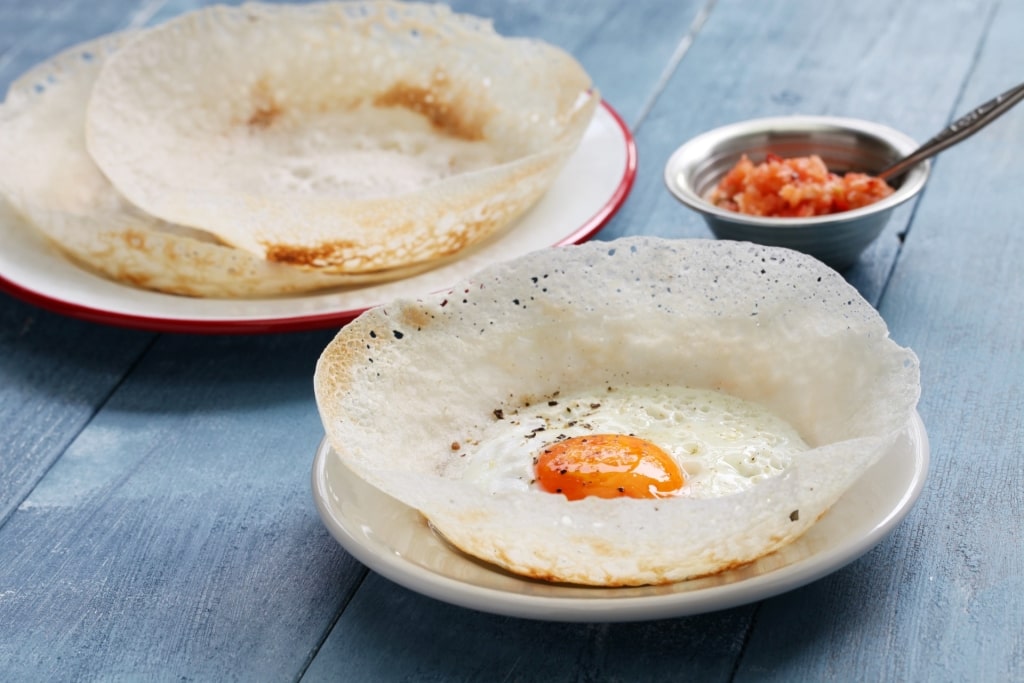
Appa
Easily one of Sri Lanka’s most famous dishes, these savory crepes make for a perfect start to the day or accompaniment to a larger meal. Appa, as they are known here, are close cousins of South Indian dosas.
They most likely originated within Sri Lanka’s Tamil community centuries ago. The deceptively simple batter made with rice flour and coconut milk gets its distinctive flavor from a short fermentation period.
To make these ultra-thin pancakes, cooks pour the batter around an appachatti, a deep pan with curved, sloping sides. Traditionally, an egg is cracked into the middle. The result is a bowl-shaped crepe. Tear off pieces of the sides and dunk them in savory curries and sambals.
Idiyappam
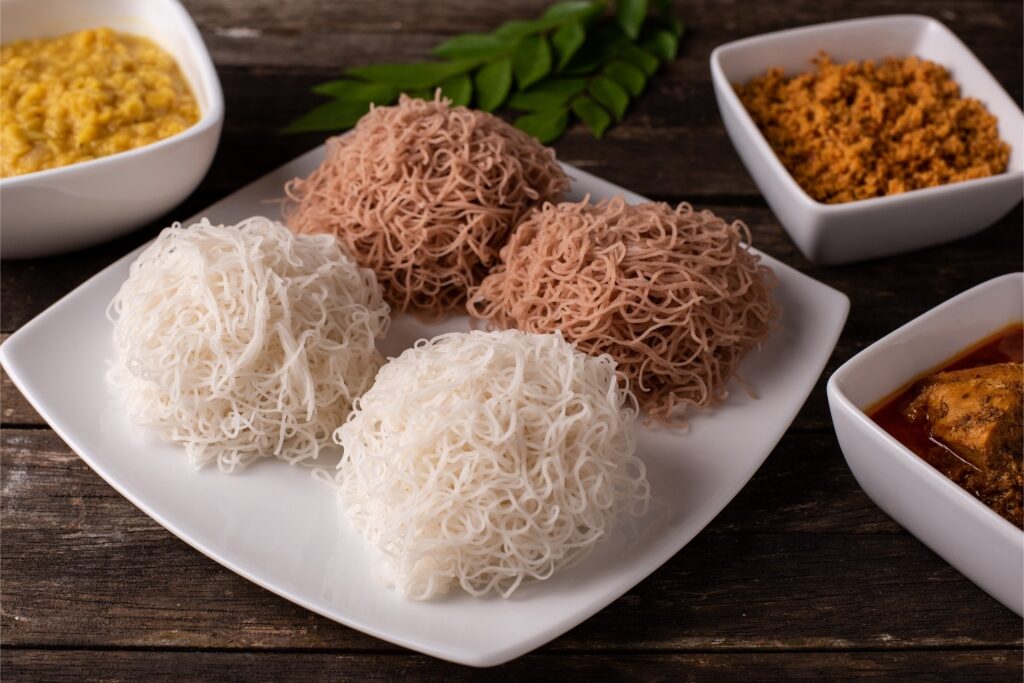
Idiyappam
Found from Kerala to Sri Lanka to Singapore, idiyappam is another starchy pancake with South Indian origins. Sometimes referred to as string hoppers, these are steamed rather than griddled or fried. They’re typically made with rice flour shaped into noodles, then molded into a disk.
In parts of India, variations of this dish are often err on the sweeter side, with coconut milk and jaggery sugar pushing it towards the dessert end of the spectrum. Much like appa, however, Sri Lankans tend to prefer their idiyappam on the savory side. It’s the perfect accompaniment to all sorts of spicy curries.
Kottu Roti
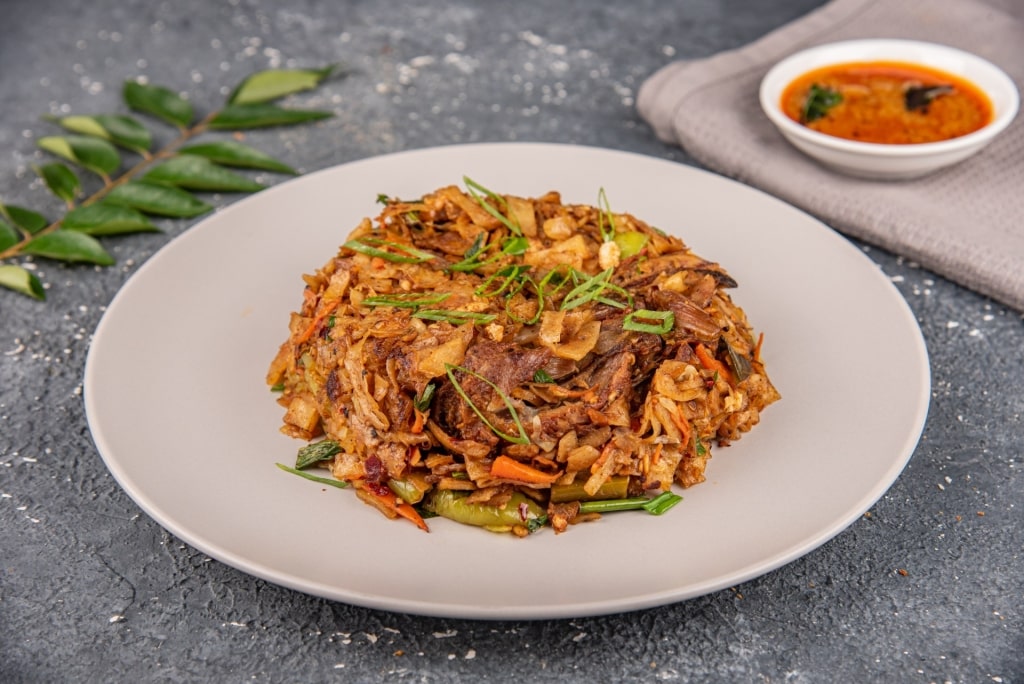
Kottu roti
If you’re craving a fast, affordable dish on the go, there’s no better choice in Sri Lanka than kottu roti. This popular street food dish was born as an economic way to fill workers’ bellies around the 1960s and ‘70s.
The name comes from koththu, the Tamil verb “to chop,” as it’s made from wheat flour rotis quite literally hacked to bits. Much like fried rice or French toast, it was invented as a way to use up day-old godamba rotis that might otherwise go to waste. Skilled cooks whack apart the fried rotis with a cleaver, then combine them with assorted meat curry sauces.
Pol Sambol
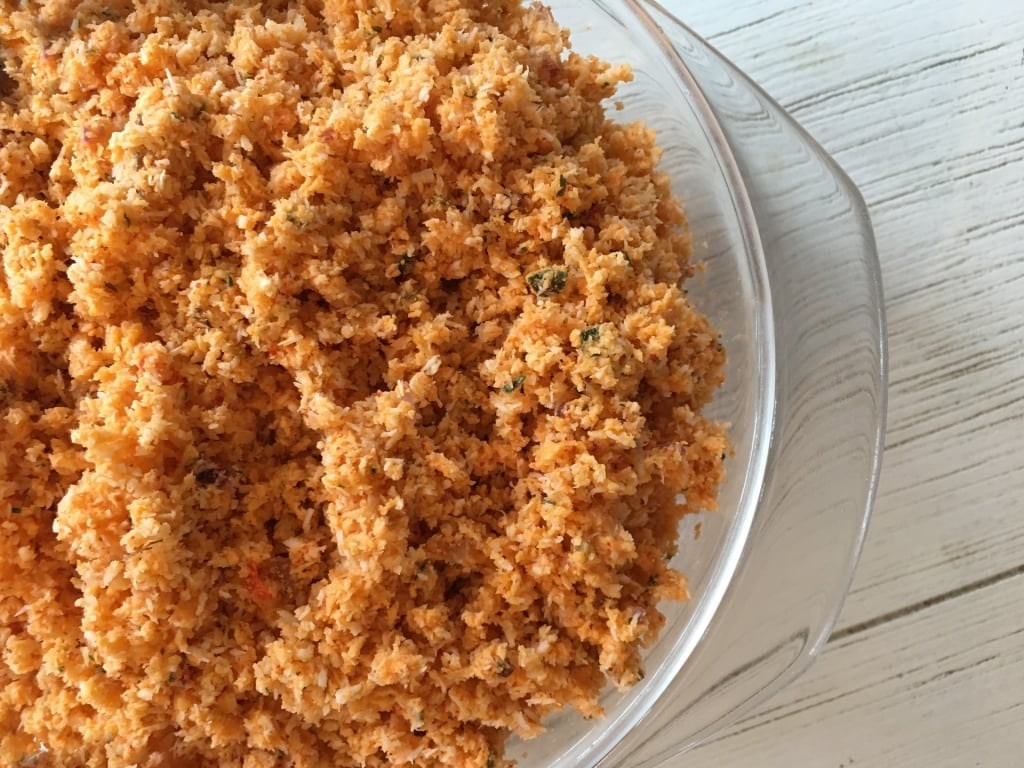
Pol sambol
Virtually no Sri Lankan spread is complete without this heavy-duty, all-purpose relish. Sambol can refer to a number of different spicy, chili-based condiments. Pol sambol, also known as thenkai sambal, consists of grated coconut, dried chilis, shallots, lime juice, and salt.
It may have a relatively short ingredient list, but this fiery, sour, salty condiment is greater than the sum of its parts. It pairs just as well with hoppers for breakfast as it does a rice and curry spread. While the basic template for a coconut sambol is rather simple, countless variations exist, including those with dried fish, garlic, curry leaves, and other additions.
Watalappan
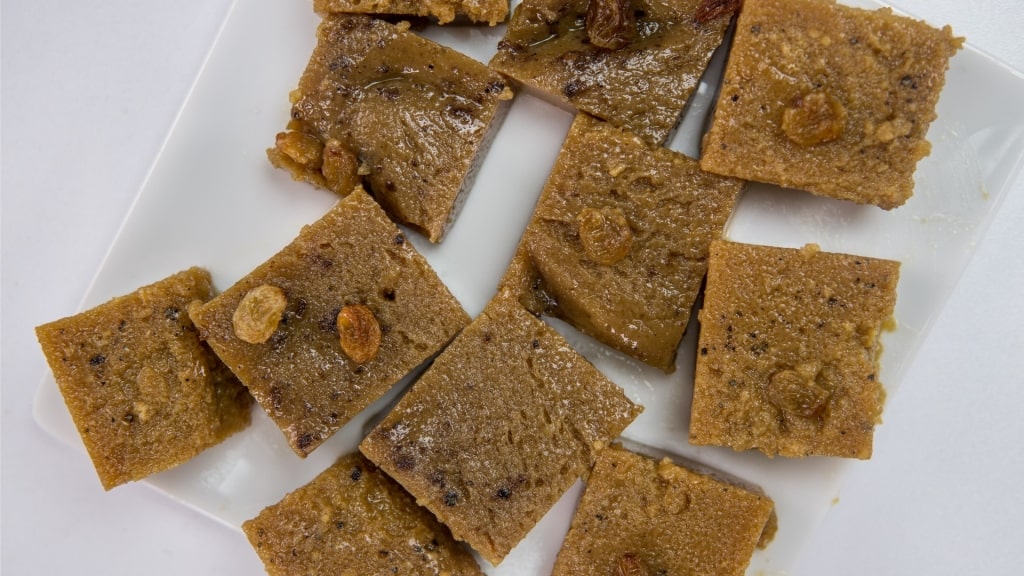
Watalappan
Sri Lankans have a serious sweet tooth and this luxuriously creamy coconut custard is one the nation’s most beloved treats. Picture a crème caramel that went on vacation to a tropical island rich in spices you’ll get the idea. Jaggery, or palm sugar, lends its customary molasses-imbued sweetness, while warm spices like cardamom, cloves, and nutmeg perfume the pudding.
Egg yolks are often added for even more richness, as is condensed milk on occasion. Toasted cashew nuts are often used as a garnish on top. Some versions even incorporate vanilla beans for an added layer of fragrance. Watalappan is usually steamed and served in individual portions, although some cooks now bake it.
Parippu
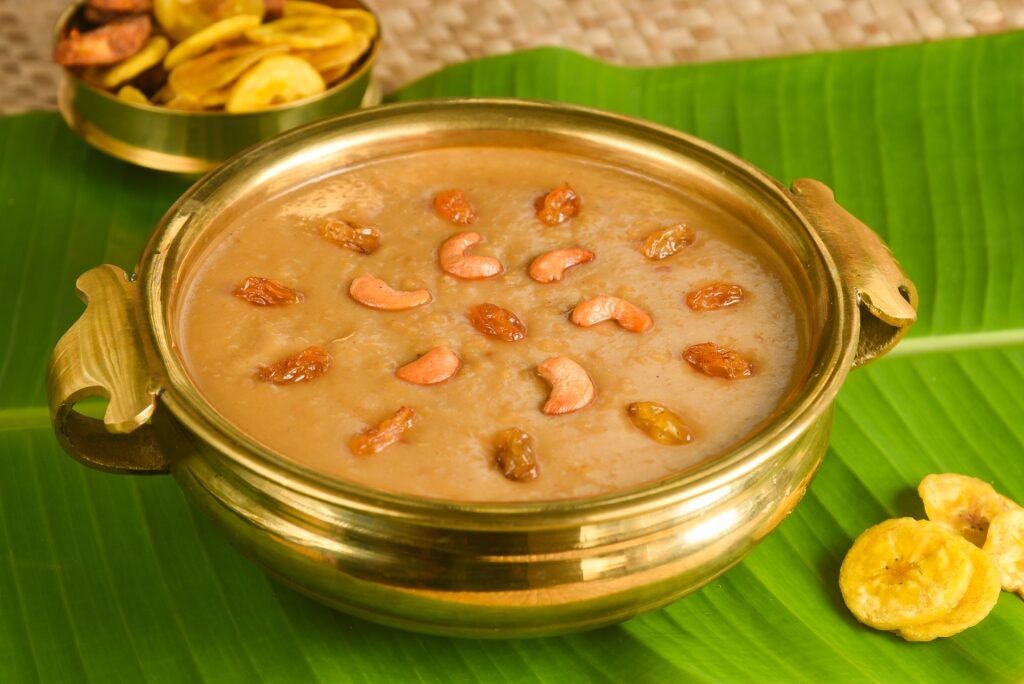
Parippu
Parippu, or dhal curry, is another humble staple with roots stretching back to the Indian Subcontinent. Comforting, economic, and filling, this simple dish is one of the most commonly served curries in Sri Lankan households. It’s made by simmering split red lentils until they break down into a creamy consistency. Coconut milk and ghee may be added for a richer texture and flavor.
What makes this unassuming dish so incredibly flavorful is the mix of spices such as fenugreek, fresh curry leaves, mustard seeds, and turmeric. These aromatics are first bloomed in hot fat to bring out their flavors.
While parippu is a deeply satisfying meal in and of itself, it’s often served as part of a larger spread.
Fish Ambul Thiyal
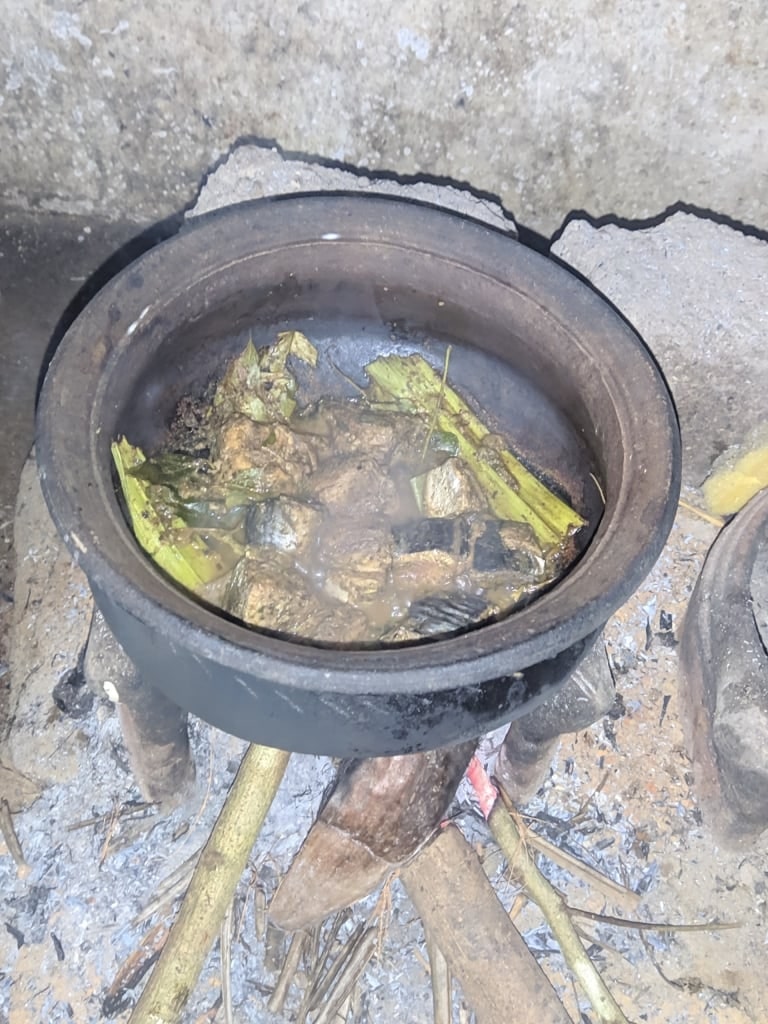
Fish ambul thiyal
The bounty of the Indian Ocean has long been an essential part of Sri Lanka’s cuisine. These waters are particularly rich in tuna, which is often used in this spicy curry. The dish is usually associated with the Sinhalese people who inhabit the southwestern part of Sri Lanka.
Ambul thiyal refers specifically to a dry style of curry. Unlike saucier versions, the spices here essentially fry in oil, forming a blackened crust on the fish. To make the curry, cooks start by creating a spice paste and rubbing it all over cubes of a firm, meaty variety of fish. Recipes vary quite a bit, but ginger, fenugreek, black pepper, chili, lemongrass, and tamarind are common. A Ceylon cinnamon stick or pandan leaves are sometimes added for a sweeter aroma.
After being simmered with a small amount of water, the fish becomes incredibly fragrant, spicy, and sour. Nowadays, people all over Sri Lanka enjoy this particular curry.
Read: Best Beaches in Sri Lanka
Lamprais
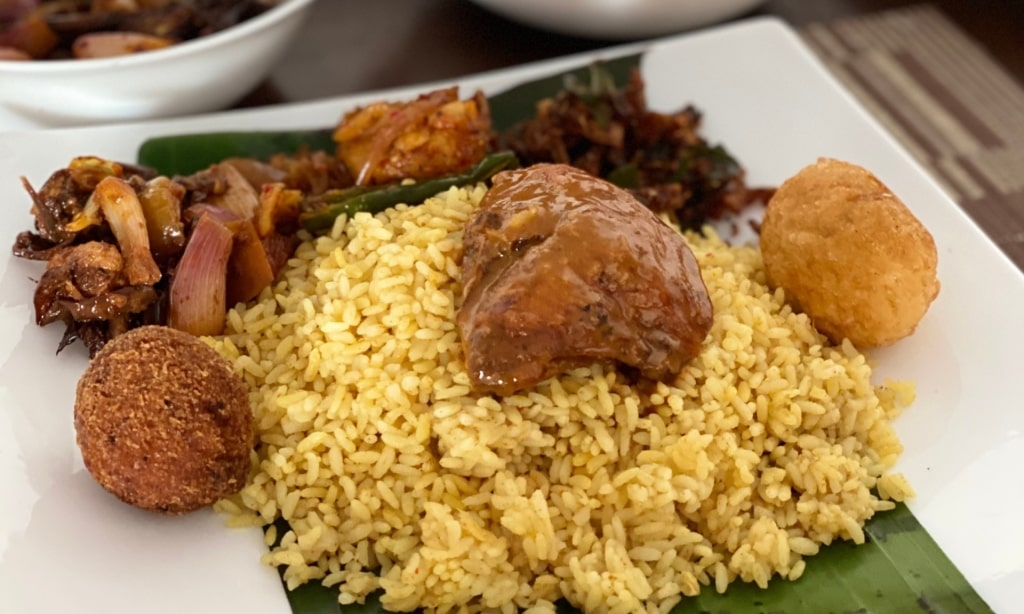
Lamprais
Sri Lanka has a number of distinct ethnic groups, each with its own food traditions. The Dutch Burghers are a mix of Sri Lankan, Portuguese Burgher, and Dutch. One of their most popular foods, which are enjoyed by all Sri Lankans, are lamprais. The word actually originates from the Dutch words for “lump” and “rice.”
Essentially, lamprais consist of neatly folded steamed parcels of banana leaves containing an entire meal. The base of the packet is always rice, typically cooked in a savory broth spiced with cinnamon, cloves, and cardamon.
To this, cooks add sambal, vegetables, and proteins including pork, lamb, beef, or less commonly, egg or chicken. Sometimes, lamprais contain pork meatballs, or frikkadels, a traditional Dutch snack.
Kiribath
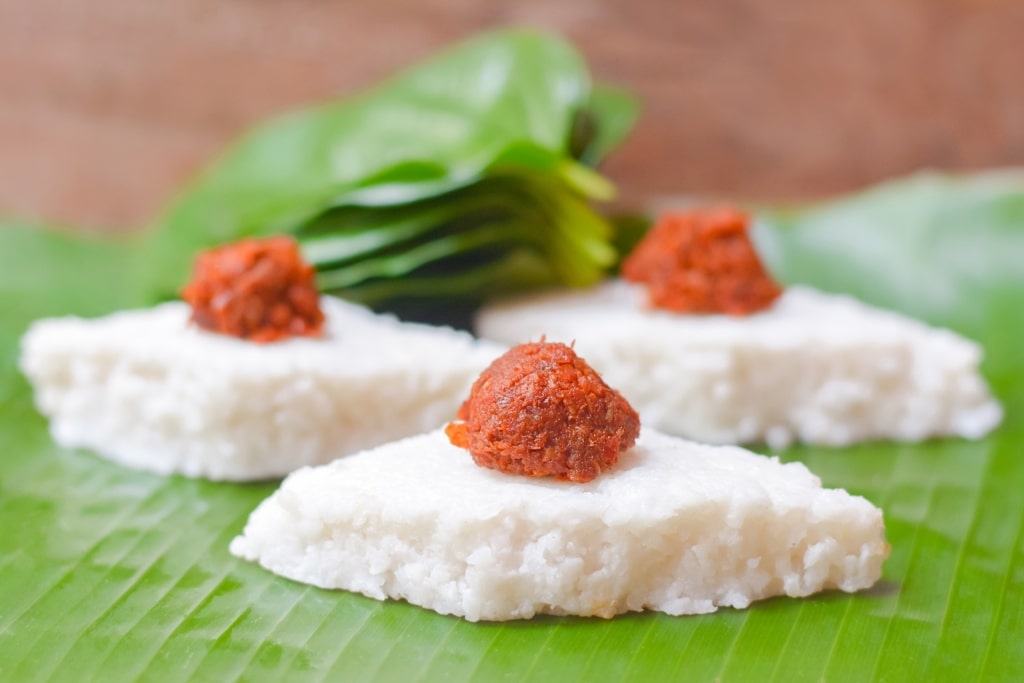
Kiribath
Rice is central to most meals in Sri Lankan cuisine. While it is often served simply steamed, a number of more flavorful variations exist.
Kiribath is a wonderfully fragrant rice dish made by adding luscious, creamy coconut milk to the steamed rice. The result has a delicate perfume and a slightly sticky texture. Unlike regular rice, with its fluffy, distinct grains, kiribath can be molded or served in slices.
Kiribath is one of those dishes that straddles the line between savory and sweet, and can be pushed in either direction, depending on the accompaniments. Sweet preparations add jaggery, while savory ones often include lunu miris, a fiery, umami-rich sambal made with dried fish.
Pittu
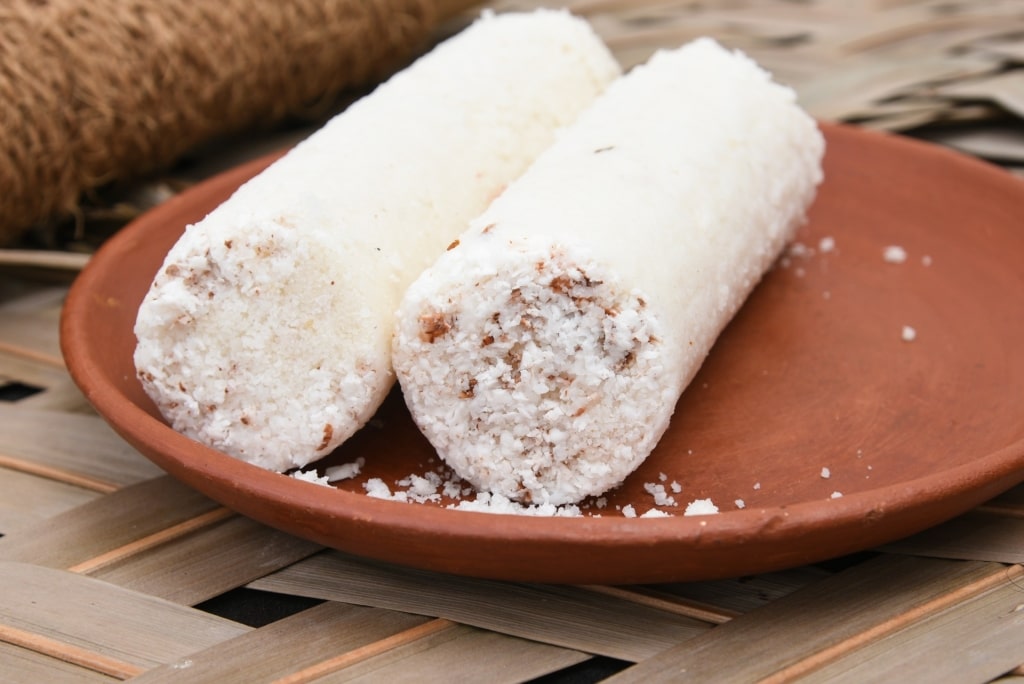
Pittu
Found throughout Sri Lanka, as well as in Tamil Nadu, Kerala, Bangladesh, and beyond, these steamed cylinders made of ground roasted rice are perfect for breakfast. Pittu—sometimes spelled puttu—usually gets a texture and flavor boost from shaved coconut. Cumin also is regularly added for an earthy, toasty note.
Once steamed, these rolls are terrific for dunking in spicy curries and sambols. They’re just as often served with sweet accompaniments, such as sliced bananas or jaggery.
Wambatu Moju
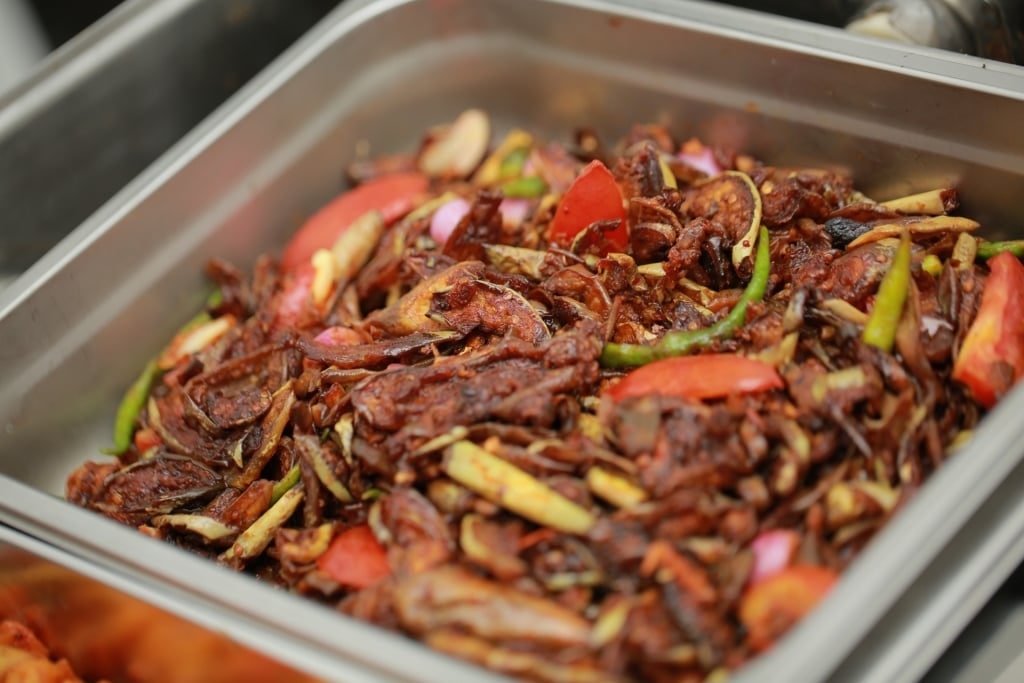
Wambatu moju
Virtually every Sri Lankan spread will come accompanied by one or more pickles or chutneys. By far one of the most ubiquitous options is this sweet-sour eggplant pickle. What gives pickle its distinctive texture is the fact that the eggplant is first deep-fried in chunks. Not only does this result in a crisp exterior and velvety interior, but it also helps it absorb seasoning better.
After frying, the eggplant is effectively caramelized with sugar and vinegar. Turmeric, fresh chilis, mustard seeds, and onions add punch and bite. The result is tangy, bright, and hard to stop eating. It perfectly cuts through the richness of coconut curries and braised meats.
Woodapple
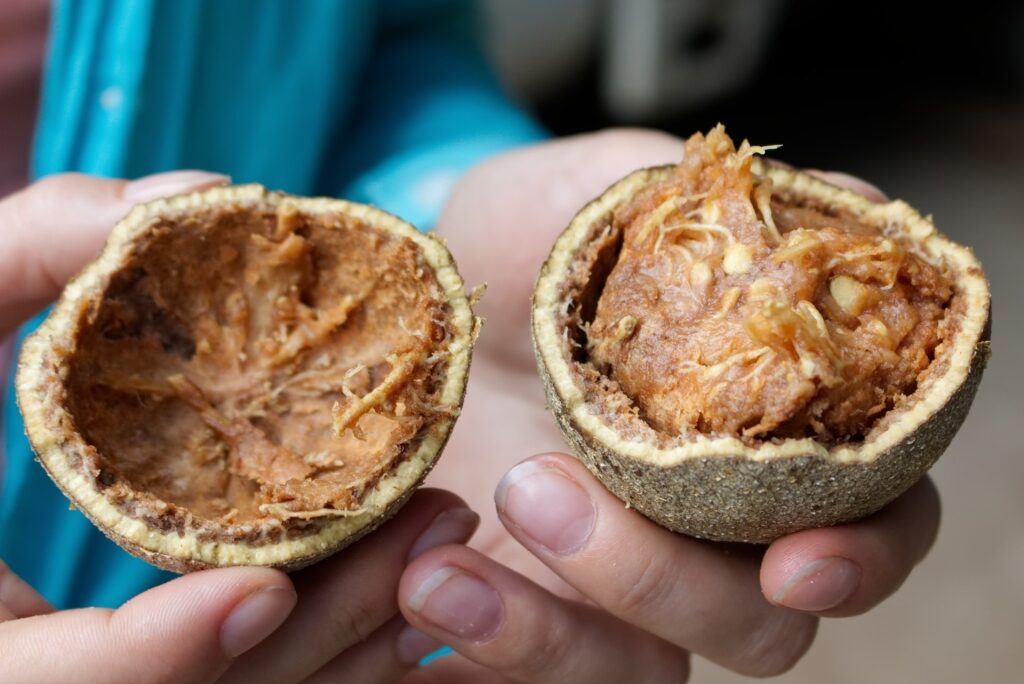
Woodapple
From the outside, this fruit does not look like much. Woodapples, sometimes referred to as monkey fruit, are really berries with a hard, pale brown exterior. What’s more it has a powerfully funky smell that some have likened to ripe blue cheese. Much like durian, the so-called “King of Fruits” of Southeast Asia, the aroma can be borderline repugnant to first-timers.
Crack it open, however, and you’ll find a delicious, sticky pulp with white seeds. The brown flesh is both intensely tart and sweet. It’s terrific eaten with a spoon, although it’s often turned into chutneys and pickles.
Note that cracking open a woodapple is no minor feat. Much like a coconut, the hard shell is tough to pierce without at least a sturdy knife. Many fruit vendors in Sri Lanka will handle the difficult part for you though.
Polos
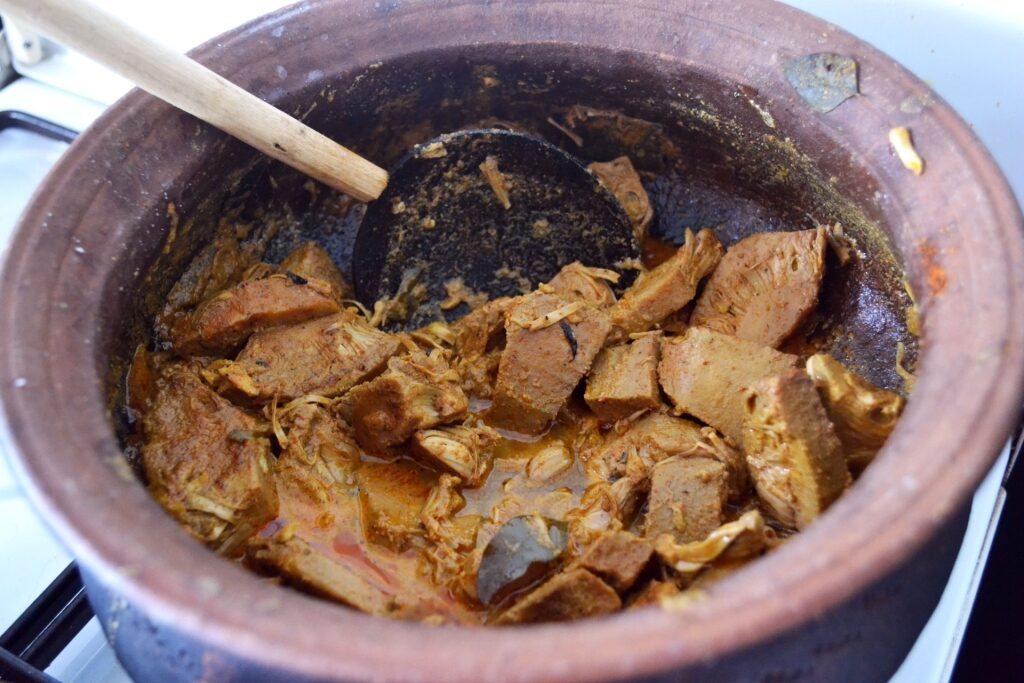
Polos
Jackfruit is an incredibly versatile, starchy fruit that takes well to both sweet and savory preparations. When simmered into a rich curry, it takes on a hearty texture much like meat. For polos, or jackfruit curry, cooks work with unripe jackfruit, which tastes a bit like cassava.
Polos is both one of the most commonly available curries and an excellent option for vegetarian travelers. It typically starts with the classic trinity of garlic, ginger and onions. After that, cooks bloom fresh chili peppers, curry leaves, mustard seeds, and other aromatics in hot oil. Coconut milk adds richness and reduces down to a sumptuous gravy, perfect for soaking up with rice.
Ceylon Cinnamon
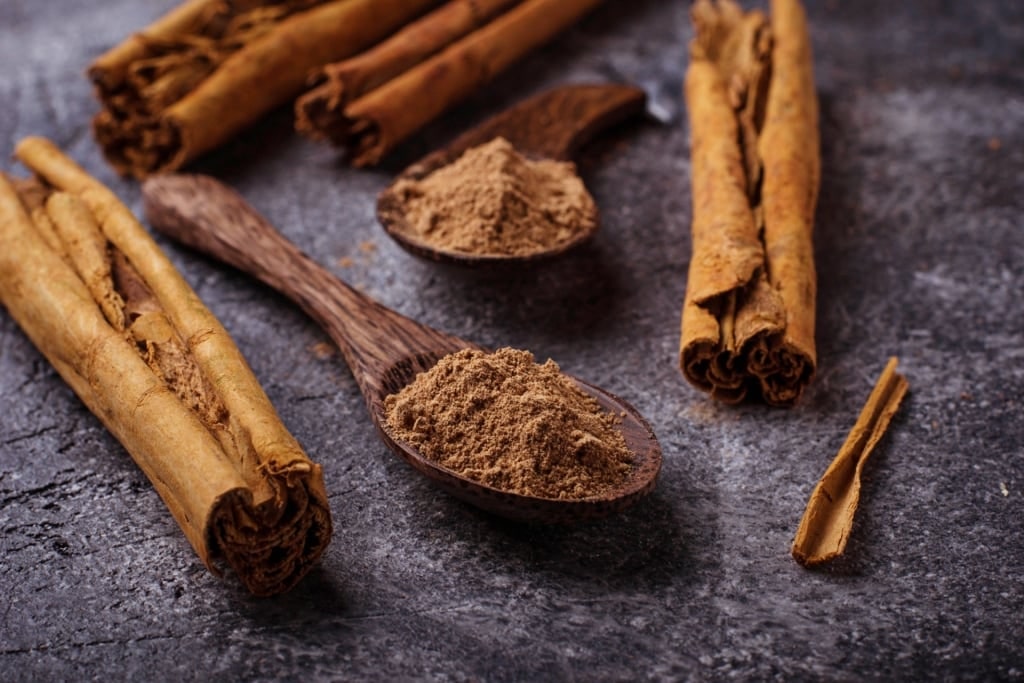
Ceylon cinnamon
The vast majority of what is sold as cinnamon in the world is really Cinnamomum cassia, which is cheaper to produce and more widely grown. While cassia, as it’s correctly referred to, is classified as a type of cinnamon, it has a bolder, decidedly less nuanced aroma. Cinnamomum verum, or “true cinnamon,” is native to Sri Lanka.
For the uninitiated, Ceylon cinnamon—so called for a colonial name for the country—has a wonderfully subtle, floral aroma. It’s more delicate than cassia or Cinnamon loureiroi, Vietnamese cinnamon, and is highly prized by pastry chefs all over the world.
While much of the Western world associates cinnamon with desserts, Sri Lankans often use this warming spice in savory curries. Alongside cloves and cardamom, it adds a wonderful level of complexity to chicken, fish, and rice dishes.
Read: Best Things to Do in Colombo
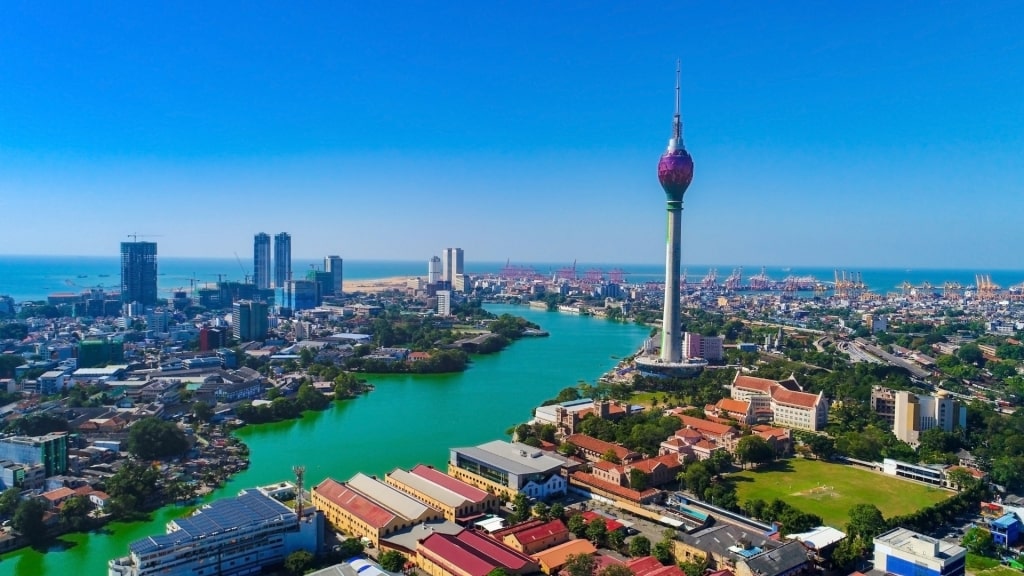
Colombo
Discover all the culinary treasures that the Pearl of the Indian Ocean has to offer when you sail to the country with Celebrity. Browse our upcoming Sri Lankan cruises and book your next adventure today.
